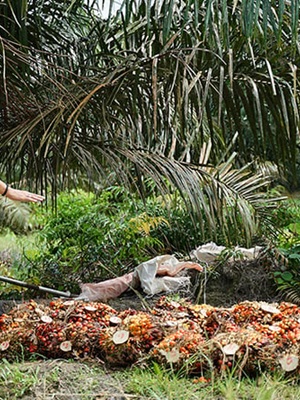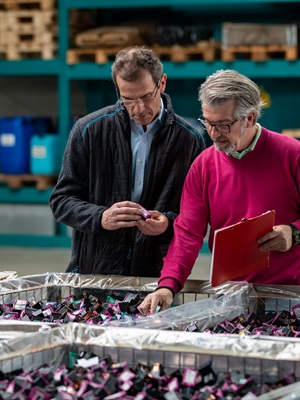In an era marked by pressing environmental challenges and growing social awareness, the Triple Bottom Line (TBL) concept has emerged as a framework for businesses to measure success beyond traditional financial metrics. Coined by John Elkington in 1994, the TBL goes beyond the conventional focus on profit to include two crucial pillars: people and planet.
In this article, we will explore this holistic approach, which highlights the interconnectedness of long-term business success with community well-being and environmental health.
What is the Triple Bottom Line?
The TBL challenges companies to balance financial gains with social responsibility and environmental stewardship. According to Elkington, there was no ‘eureka moment,’ but rather the concept has emerged gradually as a response to the increasing recognition of the need for corporate social responsibility in the late 1990s.
The framework encourages organizations to consider their broader impact, emphasizing that sustainable practices can drive both financial success and social good. An IBM consumer report found that consumers are willing to pay a premium for sustainable products. Moreover, purpose-driven consumers who opt for products and brands that are aligned with their values represent the largest market segment at 44%.
Here’s how organizations can balance the three pillars effectively to create a more resilient and responsible business:
People
The ‘people’ aspect of TBL focuses on a company's impact on its shareholders and stakeholders, including employees, customers, and local communities. Some of the simple ways companies can make a positive impact on people include implementing fair hiring and labor practices, upholding workplace safety, volunteerism and community engagement initiatives, and strategic partnerships with nonprofit organizations.
Planet
The ‘planet’ pillar of TBL involves an organization’s environmental impact and stewardship efforts, recognizing that a business’ long-term viability depends on the sustainability of its natural systems. According to the International Energy Agency’s Global Methane Tracker 2023, the global energy industry released 135 million tonnes of methane into the atmosphere in 2022.
Businesses are encouraged to manage and reduce their ecological footprint by reducing energy consumption, using ethically sourced materials, minimizing waste, conserving water, and protecting biodiversity. It goes beyond mere compliance with environmental regulations and involves finding ways to contribute to improving environmental health.
Profit
Companies are encouraged to pursue financial returns without compromising their social and environmental responsibilities. The implementation of sustainability initiatives has proven to drive business success. For instance, efficient use of resources can minimize expenses, while environmentally friendly products have a growing appeal to ESG-conscious consumers.
The Triple Bottom Line in Action
Several companies have successfully integrated TBL principles into their operations, showcasing that it is possible to balance profit with social and environmental responsibility. Here are some noteworthy examples:
DHL
DHL Group is another company that demonstrates commitment to the triple bottom line through its sustainability roadmap. They aim to reduce logistics-related greenhouse gas emissions from 40 million metric tons to less than 29 million by 2030. Furthermore, they plan to electrify 60% of pickup and delivery vehicles and increase sustainable fuel use to over 30% by 2030.
On the social front, DHL focuses on creating a safe and inclusive workplace for its approximately 600,000 global employees, targeting to reduce their Lost Time Injury Frequency Rate to under 3.1 by 2025. They also continue to take steps to achieve high engagement scores to retain the best talent and increase diversity in management, aiming for at least 30% women in management by 2025.
Patagonia
This outdoor clothing and gear company exemplifies the triple bottom line approach by balancing profit with social and environmental responsibility. On the environmental front, Patagonia is working towards 100% renewable energy for their operations, optimizing shipping methods to reduce transportation emissions, and focusing on sustainable materials. By 2025, they aim to eliminate virgin petroleum materials in their products and use only preferred materials such as organic cotton, recycled polyester, and recycled nylon. They're also targeting net zero emissions across their entire business by 2040.
For the social aspect, Patagonia has implemented robust programs to ensure fair labor practices and improve working conditions throughout their supply chain. Around 85,000+ workers benefit from Patagonia’s participation in the Fair Trade program, and 2,000+ farmers benefit from their Regenerative Organic Certified cotton program. Furthermore, the company focuses on living wages for workers and responsible purchasing practices.
Better World Books
This organization sells used books and donates part of the profits to fund libraries and literacy programs. It has already raised over $35 million for these programs and donated more than 38 million books. Furthermore, it kept over 475 million used books out of landfills by recycling and reusing them while creating jobs at the same time.
These examples show that TBL can be successfully implemented across various industries. However, implementing TBL is not without challenges. Unlike financial metrics, which are easily quantifiable, measuring social and environmental impacts is more difficult because they involve intangible factors. Combined with the lack of standardization in reporting, it becomes more challenging for companies to benchmark their performance or for stakeholders to compare between organizations.
The Interplay of the Triple Bottom Line and ESG
As TBL gained traction, Environmental, Social, and Governance (ESG) criteria also emerged as a parallel framework. While these two share a focus on sustainability and responsible business practices, TBL and ESG differ in their primary applications. TBL is often used as an internal management tool to guide decision-making and strategy, while ESG metrics are a third-party measurement of sustainability approaches, typically used for external evaluation by investors and stakeholders.
The rise of ESG investing has created additional incentives for companies to adopt TBL practices. In recent years, there has been a significant increase in ESG-focused investments, particularly among younger investors. In September 2022, Nasdaq reported that millennials have contributed $51.1 billion to sustainable funds in 2020, compared with less than $5 billion in 2015.
According to Morningstar, investors poured in $69.2 billion into ESG funds in 2021. This trend is set to continue, particularly with 40% of Gen Zs saying their investment decisions are driven by companies with a purpose. By 2025, Bloomberg expects ESG assets to exceed $53 trillion. This represents more than a third of the $140.5 trillion in projected total assets under management globally. For the longer term, the International Institute for Sustainable Development predicts that ESG-mandated investments will hit $160 trillion by 2036.
This growing investor interest has led to increased scrutiny of corporate practices, pushing companies to provide more robust and transparent reporting on their TBL performance.
The Triple Bottom Line as a Catalyst for Sustainable Transformation
The Triple Bottom Line has evolved from a novel concept to a fundamental framework for sustainable business practices. As companies face increasing pressure to address ESG issues, TBL provides a valuable guide for improving their overall impact.
While there are still challenges in measurement and standardization, the benefits of TBL, ranging from enhanced reputation to increased business resilience, make it a compelling approach towards sustainable transformation. By fully embracing this holistic framework, business success will be defined not just by financial performance but also by the organization’s ability to create value for all stakeholders while respecting the environment.
Posted 20/11/2024









